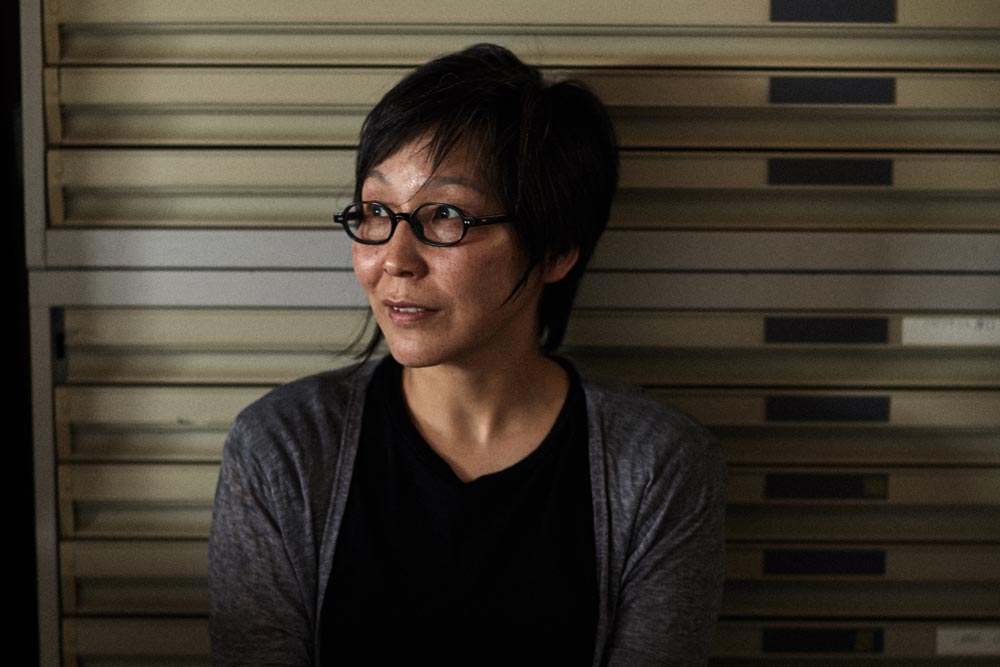Kyoto, Japan
PHOTOGRAPHY
PAINTING
SCULPTURE
Among the reasons a person might uproot her life and move to another country — a job, school, love — 'there was a statue that made me cry’ is not high on the list of common explanations. But Korean artist Sangsun Bae does not take lightly such moments of intense resonance. In fact, she has since built an impressive body of work around the idea of connection — personal, historical, cultural — and it all started with that emotional encounter with a Buddhist statue in 2002. A Korean undergrad visiting Japan when she became awestruck by the ‘Hokan Miroku’ (a wooden seated figure contemplating in half lotus pose) in a Kyoto temple, Sangsun was surprised by her own reaction to the beautiful 7th century statue, and became even more intrigued when she found out that some experts believe this Japanese national treasure was actually made in Korea.
Though the cultural relationship between Korea and Japan would later emerge as an important theme in Bae’s work, when she first moved from Korea to Tokyo, her grad school work at Musashino Art University was more tightly focused — exploring the energy that animates the intimate edges of personal space. Using live models, she wanted to illustrate the negative spaces made when two people stand very close together but do not touch. She became fascinated by the forces of repulsion and attraction being exchanged across that sliver of a distance which she depicted as a vertical shape, dark lines on a light background. After two years, the lines grew more abstract and twisting, and Bae’s work gradually shifted away from the figure as she became interested in the ways expressive marks can portray or be suggestive of relationships. At a friend’s wedding she learned how ropes tied into knots are used symbolically in traditional Japanese ceremonies.

ARTIST'S NOTE
“Culturally, there are many things that Japan and Korea share…. I tried to develop more of an artistic connection between the two countries. If you study Asian history, you learn about the uncomfortable situations that happened between Korea and Japan. I wanted to study how we are connected — not so much in the negative ways but the positive ones, especially culturally.”
The color of the threads and the orientation of the knot, upward or downward, can signify celebration or mourning. After completing a collection of large scale drawings of deep, dark, slightly abstracted knots, Bae staged an exhibition in Tokyo called Gordian Knot, a series of coiled ceramic sculptures, in response to Japan’s devastating 2011 earthquake, tsunami and nuclear disaster. She realized that knots, beyond being metaphors for connection, can also represent difficult challenges and serve as guides in contemplating solutions. The colorfully unruly hanging knots she created and photographed for her subsequent Chandelier series — included in the current ArtSuite exhibition at the Hudson — contain inextricable tangles of Japanese and Korean silk threads, representing the complex cultural and political history between the two countries.
In tandem with this ongoing project, the ever evolving artist is delving into video, interviewing Japanese people who were born and raised in Korea while it was still a colony of Japan. For Bae — now living in Japan raising two Japanese-born sons with her husband and fellow immigrant, British artist Michael Whittle — points of connection and new forms of expression always seem to be within reach, proving that her kind of talent cannot be defined by a single medium.
![]()

What inspired you to leave Korea and move to Japan?
“During my third year at University, I travelled to Kyoto where I saw a Buddhist statue that made a huge impression on me. It made me cry. Of course I love art, but it had never made me cry before. I felt deeply connected and was moved. It changed my life actually….That statue made me decide to move to Japan.”
For your abstract knot paintings, why was it so important to achieve a deep, dark black color?
“I was thinking about the connections between people who spend a lot of time together — deeper relationships that are not shallow. If a connection has many years with problems, then we need a place for this history. These things accumulate within a dark place. It is not shiny or reflective, but something like the darkness that covers everything at night. I made a really deep black by using charcoal layered with Chinese ink.”
How did you become interested in the symbolic use of knots in traditional Japanese and Korean ceremonies?
“When Michael and I got married in Korea, we had a traditional wedding ceremony. There was a large table covered with objects, all with different meanings. There were also long blue and red cords all twisted together into a knot. It meant that he and I were joining together. That idea became a new focus in my work, as a way to express people joining together.”
How does your work exploring the historical connections between Korea and Japan translate to your personal life today?
“When I began the Chandelier project, I was researching Japanese people born and raised in Korea [when it was a colony]. When these families returned to Japan after the war, they were totally rejected by Japanese society. Many of them would hide the fact that they were born in Korea….My two sons were born in Kyoto, but they are Korean and English. They have only lived [in Japan]. If something happened and they had to move suddenly to another country, how would they remember being here? I really could relate to that situation. I’m a modern immigrant to Japan. I have many personal narratives that relate me to this project.”





